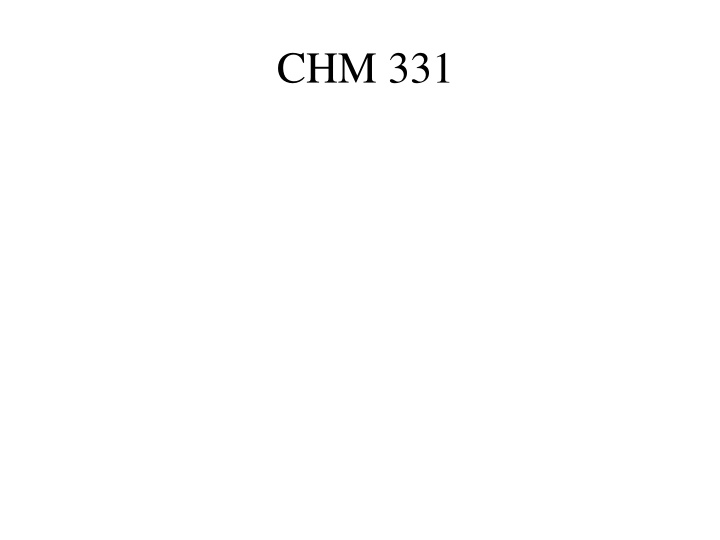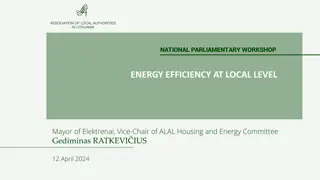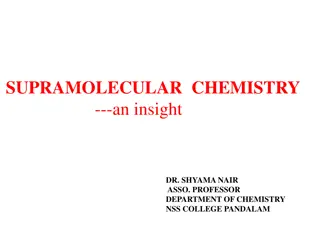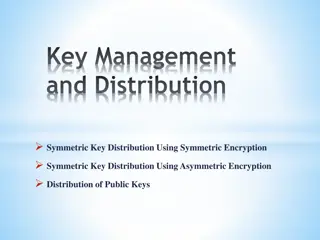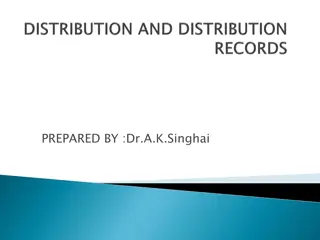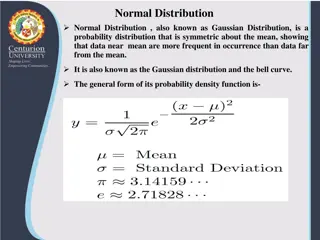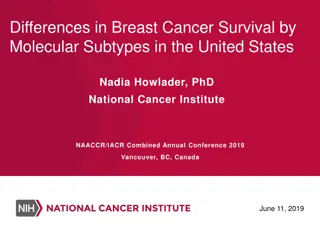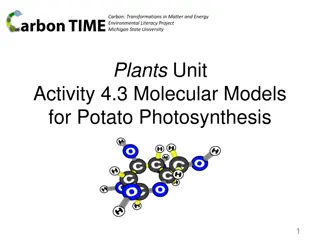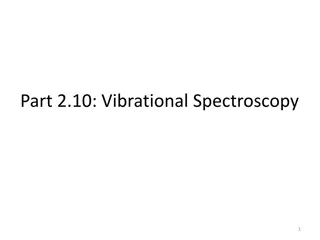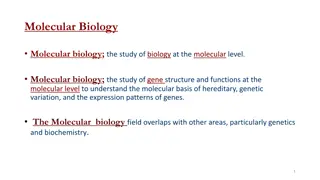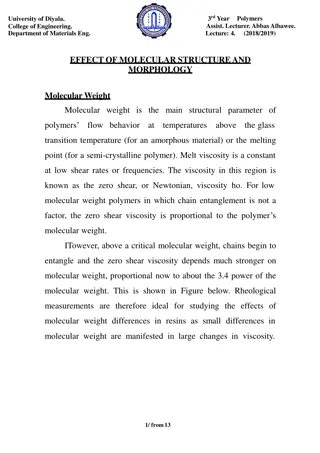Energy Distribution in Molecular Systems
Energy distribution in molecular systems is crucial for determining thermodynamic properties. The most probable configuration of energy at equilibrium leads to the Boltzmann distribution. Configurations represent the total energy available to the system, while microstates describe individual oscillator energies. Energy levels for oscillators are determined by the quantum number, and a modified harmonic oscillator model is used for analysis.
Download Presentation

Please find below an Image/Link to download the presentation.
The content on the website is provided AS IS for your information and personal use only. It may not be sold, licensed, or shared on other websites without obtaining consent from the author.If you encounter any issues during the download, it is possible that the publisher has removed the file from their server.
You are allowed to download the files provided on this website for personal or commercial use, subject to the condition that they are used lawfully. All files are the property of their respective owners.
The content on the website is provided AS IS for your information and personal use only. It may not be sold, licensed, or shared on other websites without obtaining consent from the author.
E N D
Presentation Transcript
MAXWELL BOLTZMANS STATISTICS
most probable configuration of energy for a molecular system at equilibrium. It is used to derive important thermodynamics properties of the system.
The distribution of energy associated with the dominant configuration is known as Boltzmann distribution.
Configuration is a general arrangement of total energy available to the system available to the system.
of energy that describes the energy contained by each individual oscillator. Microstates are equivalent to permutations.
n = quantum number associated with a given energy level of the oscillator.
A modified version of the harmonic oscillator is given as
probability theory to chemical systems, the configurations with the largest number of corresponding permutations is the most probable configuration.
Where, PE= probability of the configuration trial outcome
E = number of permutation associated with the event of interest.
N = total number of possible permutations
The most likely configurationally outcome for a trial is the configuration the greatest number of associated permutations.
the number of units occupying a given energy level e.g. in the configuration 3, 0, 0, a0 = 2, a3 =1, and all other an = 0 which is 0!, = 1.
The probability of observing a configuration is given as
Pi = = (iv)
Configuration with the largest weight is called the predominant configuration.
P1 + P2 + ---+Pm = (vi)
PE= 1/N = 1/N = E/N (vii)
Mj having nj ways to perform the entire series manipulations, the total number of ways to perform the entire series of manipulations (total M) is
Total M = (n1)(n2)...(nj) (viii)
P (n, j) represents the number of permutations possible using a subset of j objects from the total group of n,
Configuration is an unordered arrangement of objects manipulated = n
Configuration is j)/ j! = C (n, j) = P (n, (x)
Provides a simple method of calculating the natural log of N! It is written as
All microstates are equally probable; with a microstate associated with the dominant configuration.
